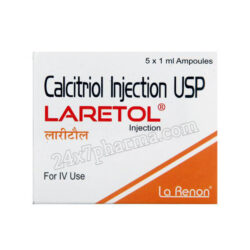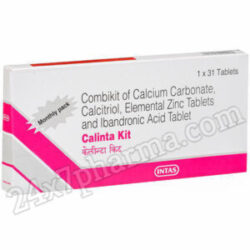Osteoporosis
Showing 1–16 of 42 resultsSorted by latest
Bandrone 6mg Injection
Original price was: $88.$74Current price is: $74.BIO D3 DS Capsule 10’S
Original price was: $13.$11Current price is: $11.BIO D3 0.25Mcg Capsule 20’S
Original price was: $22.$19Current price is: $19.BIO D3 Plus Suspension 120ml
Original price was: $20.$17Current price is: $17.Cipcal D3 60000IU Granules 1gm
Original price was: $9.$7Current price is: $7.Calspray Spray 3.7ml
Original price was: $97.$81Current price is: $81.Gemcal Kit Tablet 1’s
Original price was: $13.$12Current price is: $12.Fosavance 70/5600mg Tablet 12’S
Original price was: $58.$50Current price is: $50.Flurish 150mg Tablet 1’s
Original price was: $14.$12Current price is: $12.Laretol Injection 1ml (3 Ampoules)
Original price was: $23.$19Current price is: $19.Calinta Kit Tablet 31’S
Original price was: $27.$23Current price is: $23.Alfacal 0.25mcg Capsule 30’S
Original price was: $19.$15Current price is: $15.Active D Capsule 10’S
Original price was: $13.$10Current price is: $10.Alfacip 0.25Mcg Capsule 30’S
Original price was: $9.$7Current price is: $7.Bones that have osteoporosis become fragile and brittle, increasing the risk of fractures. Although it can affect younger folks, it most frequently affects those over the age of 50.
Age, gender, family history, lifestyle choices (such as lack of exercise or bad diet), certain drugs, and specific medical problems are only a few of the risk factors for developing osteoporosis.
An increased incidence of fractures, notably in the wrist, hip, and spine, is the main indication of osteoporosis. In addition, compression fractures in the spine can cause gradual height loss, a bent back (dowager’s hump), and/or rounded shoulders. These are examples of additional symptoms.
Through healthy lifestyle choices like receiving adequate calcium, vitamin D, and exercising, osteoporosis may be most effectively avoided. Additionally, medications may be recommended to support increasing bone density and reducing bone loss.
Any strategies for prevention or treatment should be discussed with your doctor. Regular check-ups and screening exams can aid in identifying osteoporosis early so that treatment can start, in addition to lifestyle adjustments. Fractures must be diagnosed and treated as soon as possible. Osteoporosis fracture risk can be decreased with effective care.
People can prevent their bones from deteriorating over time by being aware of the risk factors for osteoporosis and altering their lifestyles to lower those risks. Maintaining strong bones is crucial for preventing fractures even if you are already at a higher risk for developing osteoporosis.
Your risk of fractures can be significantly decreased by adhering to your doctor’s advice and making an effort to keep active. Everyone may live a healthy life with information and prevention.
















